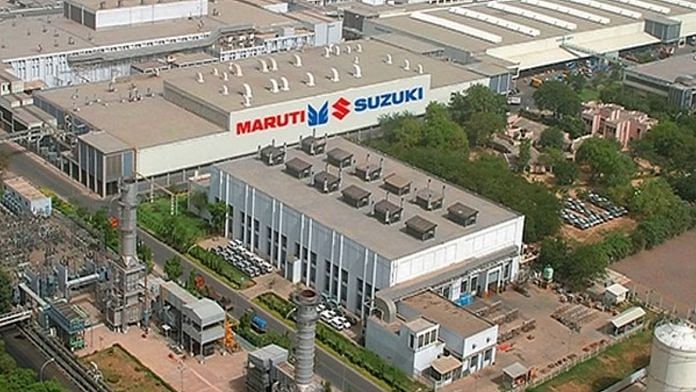Chances are that when you walk into a car showroom to enquire about the delivery of a vehicle you’ve booked, you might get a date toward the end of the year. Despite factories running at optimum capacity, waiting periods on some models stretch to a year or beyond. Demand is so high that even switching orders is not a possibility. And when you ask for the reason, it is almost always ascribed to semiconductor shortage.
Yet, at the same time, manufacturers such as Maruti-Suzuki—which has a pending order book of over 3,00,000 vehicles in India—are hitting record exports. In fact, 2022-23 will be a banner year for car exports from India, with vehicles such as the Maruti-Suzuki Grand Vitara, Volkswagen Virtus and others being piled into ships for delivery to Africa, Europe and South America. This export surge leads to an obvious question: Why are exports being prioritised over domestic demand?
Answer lies in priority markets
Well, the simple answer is that exports should be. If India is to become a manufacturing powerhouse, then honouring export orders at the cost of domestic demand is par for the course. But then the follow-up question seems sensible, too: If semiconductor shortages are impacting the domestic market, why are they not affecting exports? And this is where the answers get a bit complicated.
But first understand that modern cars are increasingly becoming computers on wheels. Gone are the days when you could play around with mechanical components to change the characteristics of a vehicle. To change a car’s performance today—not just the engine but even things like the shock absorbers and suspension—you will need a degree in computer engineering.
The semiconductor shortage has been particularly hard felt by entertainment systems, power controllers managing hybrid systems, and chips controlling the Advanced Driver Assistance Systems (ADAS) in Indian cars. Tarun Garg, Hyundai India’s Chief Operating Officer, attributes it to an evident change in the Indian market: “There has been a major change in the Indian market over the past decade, and that is for consumers to buy models with a stronger feature-set. Entry-level variants account for under 10-15 per cent of sales volumes, and for higher-end cars, that number is around five per cent. Consumers in India want features like the Bose audio system and full digital displays, which is not the case in many other markets. And these systems use pretty high-end processing power, and we have to compete with consumer electronics companies for supplies. In fact, you will notice that there is a severe supply-side shortage for semiconductors on high-end consumer electronics as well.”
Also read:
Why the preference
Systems such as the power-control unit on hybrid vehicles, which need to perform instant switching between the IC engine and the battery, as well as ADAS features, all function on semiconductors.
While some manufacturers have gone to great lengths to secure supplies, global automobile headquarters in cities like Seoul and Tokyo have to play a fine balancing act between different geographies. “We have to fight for the Indian market and our supplies,” the marketing head of a Japanese carmaker told me recently, as the global demand for new and advanced cars shot up.
At the same time, in markets such as the European Union (EU), regulators are making ADAS mandatory for vehicles to score ‘Five Star’ ratings in crash safety tests. While this has been dubbed a controversial move—as ADAS adds considerably to the cost of vehicles—this also means that semiconductors required for ADAS are being reserved for the Western markets and not India, where it is still is offered as an additional feature (not standard). But even if there are non-ADAS options at a customer’s disposal in India, there is a clear preference for it.
“Take the Tucson, where we offer a version without ADAS, it is not doing badly, but the demand for the version with ADAS has surprised us. Consumers want the latest and greatest features on the cars they buy, and who can blame them?” Garg explains.
The shortage of chipsets for ADAS and power control units has caused manufacturers like Hyundai and Kia to delay the introduction of facelifts for some of their vehicles. It has been speculated that the new and improved Kia Seltos, due to release later this year, will have ADAS as an option on its top model. But without a robust supply chain of semiconductors in place, launches can be delayed.
But when will this shortage of semiconductors ease up? Garg says things will not improve until later this year. “At least four to eight months, depending on the cars. And this will impact all manufacturers and not just us. I believe that for some semiconductors, such as those needed for Hybrid systems, the shortage could carry on for a few months longer. But with new semiconductor fabrication plants coming up, including in India, we will look back at this time and laugh in a couple of years.”
@kushanmitra is an automotive journalist based in New Delhi. Views are personal.
(Edited by Zoya Bhatti)






